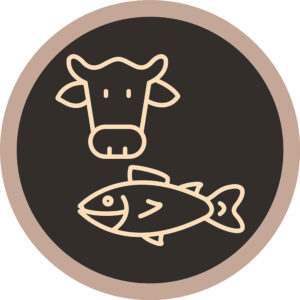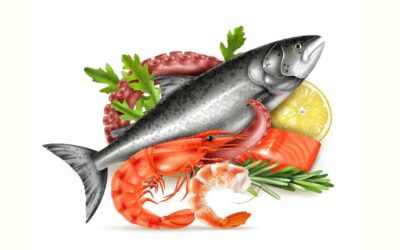
Australia’s cattle industry is one of the best-organised primary production sectors in the country. From the paddock to Parliament, the Cattle Council of Australia and state-based farming bodies provide unified representation, effective lobbying, and clear leadership.
In contrast, the commercial fishing sector — spanning wild-catch, aquaculture, crustaceans, molluscs, and niche fisheries — remains fragmented. Despite being a multi-billion-dollar industry, it often lacks a single, coherent national voice.
This article explores why the seafood sector isn’t as unified as the beef industry, what structural and legal barriers stand in the way, and what practical and legal steps could help it become better organised and more influential.
A Fragmented Industry: Too Many Fish, Not Enough Voice
The Australian commercial fishing industry operates under a patchwork of jurisdictions, licences, and regional identities. Each fishery has its own biology, markets, and politics — and that complexity is reflected in its governance.
Key features of this fragmentation include:
- Multiple jurisdictions: Fisheries are managed separately by the Commonwealth, each state, and the Northern Territory under the Fisheries Management Act 1991 (Cth) and corresponding state laws.
- Species diversity: Tuna exporters, rock lobster fishers, oyster growers, and trawl operators have very different interests, markets, and regulatory issues.
- Scale differences: Operators range from small family boats to vertically integrated seafood corporations — with little common ground.
- Regulatory intensity: Licensing, quotas, and reporting obligations differ across regions, creating administrative silos.
- Cultural independence: Many fishing communities are built around self-reliance and local control, not centralised industry governance.
Unlike the cattle sector, which has a relatively homogenous product and national levy system, seafood producers often see each other as competitors rather than allies.
The Beef Model: How the Cattle Industry Got Organised
The Cattle Council of Australia and its partners — Meat & Livestock Australia (MLA) and state farming organisations — have created a vertically integrated advocacy structure.
The beef model works because it combines:
- A single national representative voice through the Cattle Council, backed by statutory recognition and funding.
- Levy-based funding under the Primary Industries (Excise) Levies Act 1999 (Cth), ensuring every cattle transaction contributes to research and advocacy.
- Close cooperation between research, marketing, and policy arms — with MLA focusing on science and trade, and the Council focusing on representation.
- Strong relationships with government departments and ministers, ensuring early input into regulation.
- State-level coordination, where state farming bodies feed into the national framework.
In short, the cattle industry speaks with one voice, supported by legislation and sustained by predictable funding.
The seafood sector, by contrast, is more like a school of fish — agile but dispersed, reactive rather than coordinated.
Why the Fishing Industry Hasn’t Followed
The reasons the seafood sector hasn’t replicated the beef model are both structural and cultural.
- Jurisdictional fragmentation
-
- Fisheries are managed under a complex web of Commonwealth, state, and territory laws.
- Each government controls its own licensing, quota, and management plans.
- There is no single enabling statute for the seafood industry as a whole.
- Absence of a compulsory levy system
-
- While the Fisheries Research and Development Corporation (FRDC) collects levies for research, these funds are not directed toward advocacy or representation.
- Without a national levy, no organisation has guaranteed funding for long-term policy work or communications.
- Species-specific and regional identities
-
- Prawn, lobster, abalone, and finfish industries each have their own associations.
- State-based fishing councils often prioritise local issues over national policy.
- Limited policy bandwidth
-
- Many fishing enterprises are small, family-run businesses with limited time or money to engage in policy discussions.
- Lobbying often falls to volunteers or part-time representatives.
- Perceived lack of political influence
-
- Fisheries management decisions are seen as technical or scientific, reducing the role of political advocacy.
- Environmental NGOs and recreational fishing groups often have stronger public engagement and lobbying capability.
What the Industry Needs to Do
To become better organised, the commercial fishing sector needs to think strategically — not just about catching fish, but about building governance muscle.
Key steps include:
- Establish a national representative body with authority and recognition
-
- Reform or expand Seafood Industry Australia (SIA) into a truly representative peak body, not just a membership organisation.
- Pursue statutory recognition under Commonwealth law, similar to how agricultural industries are recognised through their levy and research corporations.
- Develop a formal charter endorsed by state and territory fishing councils.
- Create a sustainable funding base
-
- Introduce a national seafood industry levy, potentially modelled on the livestock levy system.
- Levy revenue could fund marketing, policy development, and member services.
- The levy mechanism could be legislated under amendments to the Primary Industries (Excise) Levies Act 1999 (Cth).
- Align advocacy and research
-
- Link the policy arm (SIA or a successor body) with FRDC to integrate science-based advocacy.
- Shared data and research outcomes can strengthen lobbying credibility.
- Foster unity across species and jurisdictions
-
- Develop cross-sector working groups (wild-catch, aquaculture, processing, export).
- Hold an annual “Seafood Congress” to agree on national priorities.
- Use memoranda of understanding (MOUs) between state councils to align policy positions.
- Strengthen communication and visibility
-
- Invest in public relations and community engagement to improve seafood’s social licence.
- Develop media campaigns highlighting sustainability, employment, and food security benefits.
- Build alliances with chefs, tourism operators, and regional councils.
- Professionalise governance
- Adopt corporate governance principles similar to listed companies:
-
- Independent directors
- Transparent financial reporting
- Codes of conduct and conflict management policies
- Establish committees for audit, policy, and stakeholder engagement.
Legal and Structural Advice
From a legal perspective, creating a unified and effective seafood industry body requires careful design.
- Incorporation and governance structure
-
- The body should be established as a company limited by guarantee under the Corporations Act 2001 (Cth), ensuring transparency and limited liability.
- The constitution must:
- Define membership classes (e.g. fishers, processors, exporters).
- Set out voting rights, ensuring fairness across large and small operators.
- Outline dispute resolution and representation processes.
- Levy legislation
-
- A levy scheme could be established under federal legislation, similar to existing models for red meat, grains, and dairy.
- Levies could be collected at first point of sale or export, administered by the Department of Agriculture, Fisheries and Forestry (DAFF).
- A portion could be allocated to FRDC for research, and another to the national body for advocacy and communications.
- Relationship with existing entities
-
- FRDC could continue as the research arm, while the new national body acts as the policy and advocacy arm.
- Clear legal boundaries would be needed to ensure compliance with funding and governance laws.
- Compliance and accountability
-
- The organisation would need to comply with:
- Corporations Act 2001 (Cth) (directors’ duties and financial reporting)
- Australian Charities and Not-for-Profits Commission Act 2012 (Cth) (if registered as a charity)
- Lobbying Code of Conduct (if engaging directly with government).
- Annual reports should include audited financials, policy outcomes, and stakeholder engagement summaries.
- The organisation would need to comply with:
- Competition and consumer law
-
- The industry must avoid anti-competitive coordination, such as collective pricing or marketing arrangements that breach the Competition and Consumer Act 2010 (Cth).
- Legal advice should focus on distinguishing between legitimate collective representation and prohibited collusion.
- Intellectual property and branding
-
- Develop a protected national seafood brand (e.g. “Australian Wild Seafood” or “Seafood Australia”) with registered trademarks.
- IP licensing agreements can be structured to ensure revenue supports industry projects.
The Legal Adviser’s Role
Lawyers advising the sector can provide value beyond compliance. They can:
- Facilitate constitutional design – drafting structures that balance inclusivity and control.
- Advise on levy mechanisms – working with government to establish legislative frameworks.
- Develop governance manuals – covering ethics, lobbying, and disclosure standards.
- Support dispute resolution frameworks – ensuring state and species groups can resolve conflicts internally.
- Assist with mergers or alliances – helping smaller associations consolidate under one national banner.
- Train directors – on duties, advocacy rules, and reputational risk.
The ultimate legal goal is to help the sector speak with one credible, compliant, and confident voice.
Building Influence: From Compliance to Confidence
If the Australian seafood sector wants to match the beef industry’s influence, it must see advocacy as infrastructure — not an afterthought.
That means investing in:
- Governance systems – clear rules, transparent processes, professional leadership.
- Policy consistency – coordinated positions across states and species.
- Public engagement – building consumer trust through storytelling and transparency.
- Legal structure – enabling the collection of funds, representation of members, and management of risk.
Beef producers achieved their strength through decades of structure-building and cooperation. The seafood industry can do the same — but only if it sees unity not as an aspiration, but as an operational necessity.
The Future: One Voice for Australian Seafood
A unified seafood industry body could:
- Negotiate national policies on sustainability, quota reform, and export trade.
- Advocate effectively on fuel costs, vessel regulation, and labour law.
- Build market trust through consistent messaging about quality and sustainability.
- Partner with universities and government to drive innovation.
Legally, this would represent a shift from a fragmented collection of associations to a federated model — one that preserves local identity while pooling resources for national leadership.
The Australian commercial fishing industry has all the ingredients: skill, science, and story. What it needs now is structure — and a legal foundation strong enough to hold it together.
Key Takeaways
- The fishing sector’s diversity has prevented a unified advocacy model like the cattle industry’s.
- Legal fragmentation across jurisdictions reinforces organisational division.
- A national, levy-funded seafood body could bring cohesion, credibility, and influence.
- Lawyers can guide the sector through constitutional design, levy frameworks, and compliance.
- Unity requires both cultural change and legal structure — but it’s achievable.



